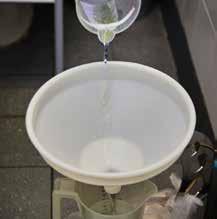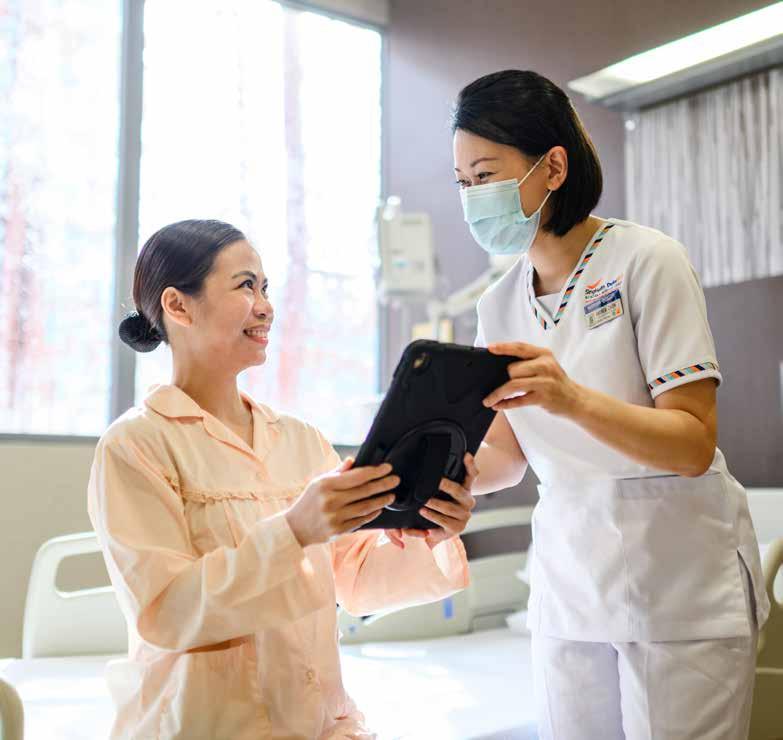
3 minute read
Empowering patients with information at their fingertips
Patients can now access their test results, medication list and schedule, revisit their physiotherapy exercises and more through a bedside tablet during their hospital stay.
by Elena Owyong
The Patient Bedside Tablet (PBT) is part of Nursing’s long-term vision to transform patient care through empowering patients and their caregivers with information and knowledge.
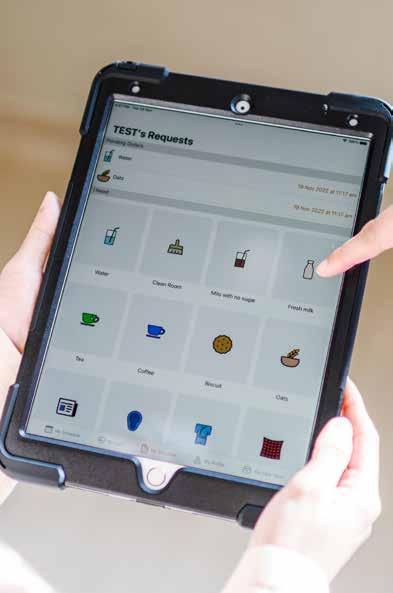
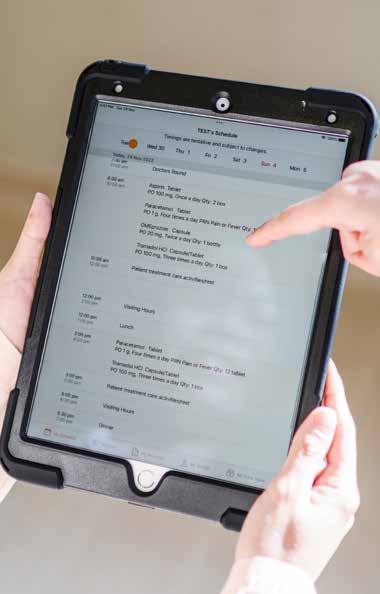
In a typical hospital setting, a patient uses a call bell to alert the nurse when they want to find out their blood test results and details of upcoming medical tests. The nurse will retrieve the information from the workstation before returning to update the patient. This process is repeated when there are similar queries from other patients.
The MyCare application on the PBT provides information on schedule, medication list and patients’ request. (Information shown for demonstration purposes only).
With the introduction of the Patient Bedside Tablet (PBT), this workflow has been streamlined. The PBT contains various applications where patients can access information such as their treatment plan, medical investigations and medication schedules in real-time. Through the MyCare app, they can get updates on their vital signs, test results, dietary recommendations and rehabilitation instructions. The MyEdu app houses educational materials spanning a range of health conditions and includes tips on managing a nasal gastric tube, exercise videos for rehabilitation and self-care after surgery. Apart from electronic games to keep patients occupied during their stay, the tablet also allows them to communicate with their nursing team.
Explaining the rationale for developing this, Adjunct Associate Professor Ang Shin Yuh, Deputy Director, Nursing Quality, Research & Transformation, SingHealth
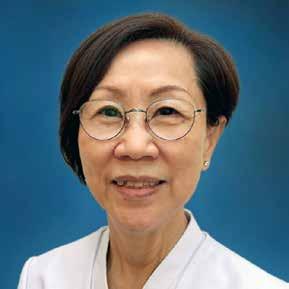
Ms Lau Gek Muay
Deputy Director, Nursing, KK Women’s and Children’s Hospital
Group Nursing, said, “This is part of Nursing’s long-term vision to transform patient care through empowering patients and their caregivers with information and knowledge.”
Adj Assoc Prof Ang co-leads this initiative with Ms Lau Gek Muay, Deputy Director, Nursing, KK Women’s and Children’s Hospital (KKH). The project team also includes nurses from Singapore General Hospital (SGH), KKH, Changi General Hospital (CGH), the National Heart Centre Singapore (NHCS), staff from the Integrated Health Information Systems (IHiS) and the SingHealth Office for Service Transformation.
To develop the PBT’s features, the team conducted multiple focus group exercises and surveys where they engaged patients, caregivers and the SingHealth Patient Advocacy Network (SPAN) to understand their needs. Mr Mohan D Pillay, a SPAN member and co-chair for SPAN@DEM (Department of Emergency Medicine at SGH) provided feedback on the development of the PBT software. “The feedback session was very useful in helping me to understand the types of information that will potentially be provided to inpatients via the bedside tablet,” he said. One feature that Mr Pillay thought was particularly useful is the ability for patients to type questions to their nursing team and receive responses via text or faceto-face interactions.
Continuous improvement
PBT was piloted at an SGH ward in 2018 before an improved version was extended to the general wards at SGH, KKH, NHCS and CGH in 2022.
According to Adj Assoc Prof Ang, patients are empowered when information is in their hands, such as when they can monitor their own test results and see their vital signs. The tablet also has an alarm function that reminds patients to take their medication on time — this helps them get into the routine of doing so before they are discharged.
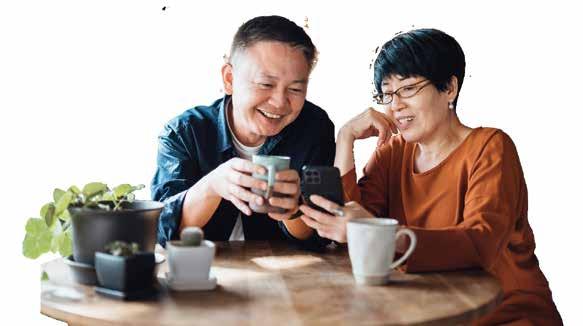
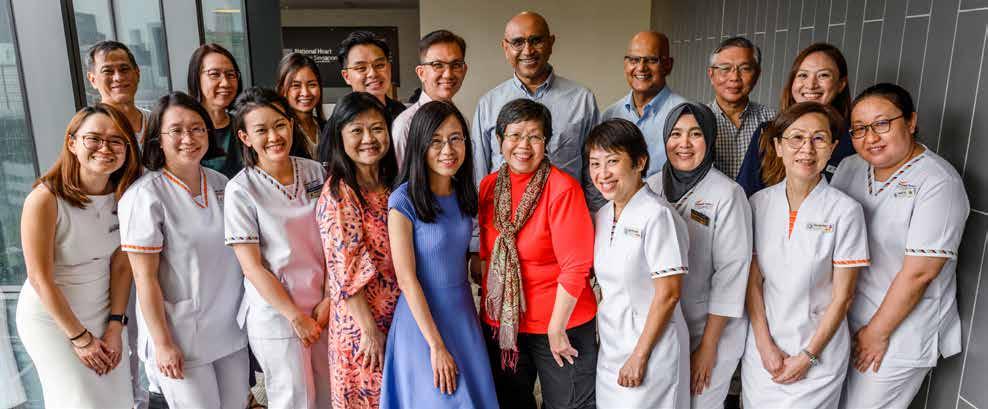
Many times, the available information on the PBT helps to allay caregivers’ anxiety. “Parents of paediatric patients often get very anxious when their child has a fever. When they are able to monitor their child’s vitals and see improvements in their child’s condition through information available in the tablet, they feel relieved,” Ms Lau shared. Having sight of the care team’s routine also offers caregivers the opportunity to better schedule their breaks and be present during medication time and doctors’ rounds.
The PBT is constantly being improved. “We plan to include a dietary charting function. For instance, caregivers of young patients can indicate how much they have eaten or drunk. This information will be linked to the patients’ electronic medical record,” said Adj Assoc Prof Ang.
APPOINTMENT
View and reschedule your appointments with ease!
PAYMENT
Pay anywhere, after consultation or treatment.
ORDER MEDICINE
Arrange for FREE delivery of your medicines!
TEST RESULTS & REPORTS
See all your test results here!
HEALTH TOOLS
Track your blood glucose, blood pressure, weight and more!
Adj Assoc Prof Ang Shin Yuh Deputy Director, Nursing Quality, Research & Transformation, SingHealth Group Nursing
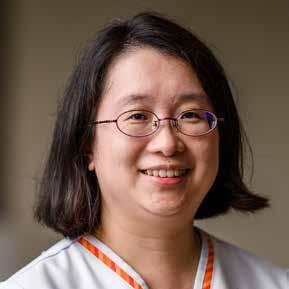
Senior Resident
Dr Lee Han Jie demonstrates how urine flow is measured with a uroflowmetry machine, used in the clinic. The urine should hit the side of — not directly into — the funnel for data to be recorded correctly. The data are printed out for analysis.
